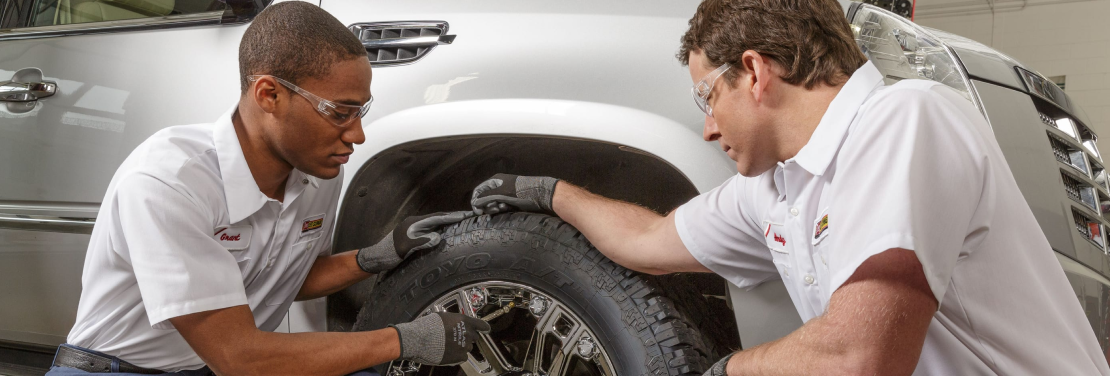Quality Tire Shop Morris: Your Best Location for Tire Needs
Quality Tire Shop Morris: Your Best Location for Tire Needs
Blog Article
Tire Service: Comprehending Tire Pressure Surveillance Solutions
Understanding Tire Stress Surveillance Equipments (TPMS) is an important element of maintaining optimum lorry performance and safety when traveling. With developments in automotive technology, TPMS has actually ended up being a standard function in modern cars, providing real-time details on tire stress levels. Delving deeper into the details of TPMS, one can discover the various components that comprise this system and the relevance of each in guaranteeing exact monitoring. From direct to indirect TPMS systems, the landscape of tire stress surveillance varies, each with its unique collection of benefits and factors to consider. Stay tuned to decipher the complexities of TPMS, from maintenance ideas to the obvious advantages of maintaining your tires effectively blew up. morris tire and alignment.

Significance of TPMS
The significance of Tire Stress Monitoring Systems (TPMS) lies in their capacity to improve car security and efficiency through real-time surveillance of tire pressure degrees. Maintaining the correct tire stress is essential for making sure optimum handling, stopping, and total safety and security of a lorry. TPMS offers vehicle drivers with immediate responses on any type of overinflated or underinflated tires, permitting timely changes to be made.
Elements of TPMS
Comprising different essential components, a Tire Stress Surveillance System (TPMS) works as an innovative safety and security attribute in contemporary lorries. The main elements of a TPMS include sensors, a control module, and a caution indication. Sensors are commonly situated in the tire shutoff stem or affixed to the wheel assembly, where they measure tire pressure and transfer information to the control module. The control component processes this details and triggers a warning if it finds substantially reduced stress in any one of the tires. The caution indication, commonly a sign on the dashboard, informs the chauffeur to examine the affected tire or tires. Some advanced TPMS designs additionally show the real tire pressure readings for each and every tire, providing vehicle drivers with real-time info to make sure optimal tire performance and safety. By monitoring tire stress continuously, TPMS assists avoid crashes, reduces tire wear, and boosts gas effectiveness, making it a crucial element for automobile safety and security and efficiency.
Types of TPMS

On the other hand, indirect TPMS relies upon the car's wheel rate sensing units to keep an eye on tire stress. This system finds underinflation by comparing the rotational rates of the wheels. Indirect TPMS is less costly than direct TPMS, as it utilizes existing sensing units within the lorry.
While straight TPMS uses much more precise readings, indirect TPMS is less complex in style and generally requires much less maintenance. Both systems have their limitations and advantages, and the option in between them commonly depends upon elements such as cost, vehicle make, and individual choice. Comprehending the distinctions between these two types of TPMS can assist car owners make notified decisions regarding tire maintenance and security.
TPMS Upkeep Tips
Reliable upkeep of TPMS is vital for making sure optimum efficiency and safety of your automobile. Frequently inspecting the TPMS sensing units for any kind of damages or deterioration is essential. Make certain that the sensing units are complimentary and clean from debris that can hinder their performance. Additionally, it is a good idea to check the sensing unit batteries regularly and change them as needed to ensure accurate readings. Conduct routine examine the tire stress degrees and compare them with the TPMS analyses to ensure they are consistent. Alter the system complying with the manufacturer's guidelines if there are any type of discrepancies. Throughout tire turning or substitute, make see this website sure that the TPMS components are handled thoroughly to stop any type of prospective damage. Last but not least, if the TPMS cautioning light illuminates on the control panel, address the concern immediately by checking the tire pressures and the total websites system for any kind of faults. By adhering to these upkeep pointers, you can prolong the life-span of your TPMS and enhance the safety and security of your driving experience.
Advantages of Correct Tire Pressure
Preserving appropriate tire stress, as emphasized in TPMS Maintenance Tips, is vital for enjoying the numerous benefits connected with optimum tire pressure levels. Among the main advantages of preserving the correct tire stress is boosted fuel performance. When tires are correctly blown up, there is much less rolling resistance, resulting in better fuel economic situation. Furthermore, appropriate tire stress guarantees also tire wear, expanding the lifespan of the tires and promoting safer driving conditions. With the right tire pressure, vehicles also have better handling and traction, particularly in adverse climate condition. This can boost general driving performance and safety and security for the motorist and guests. Preserving optimum tire stress can contribute to a smoother and more comfy ride by reducing resonances and sound created by underinflated tires. To conclude, the benefits of proper tire stress surpass simply tire longevity; they include enhanced fuel effectiveness, boosted security, much better lorry performance, and general driving convenience.
Verdict
In conclusion, comprehending tire pressure tracking systems (TPMS) is essential for preserving ideal tire stress and making sure car safety and security. By acknowledging the importance of TPMS, being familiar with its parts, understanding the different types available, adhering to correct upkeep suggestions, and realizing the advantages of preserving appropriate tire stress, drivers can enhance their driving experience and extend the life-span of their tires. Appropriate tire stress is crucial to safe and effective vehicle procedure.

Report this page